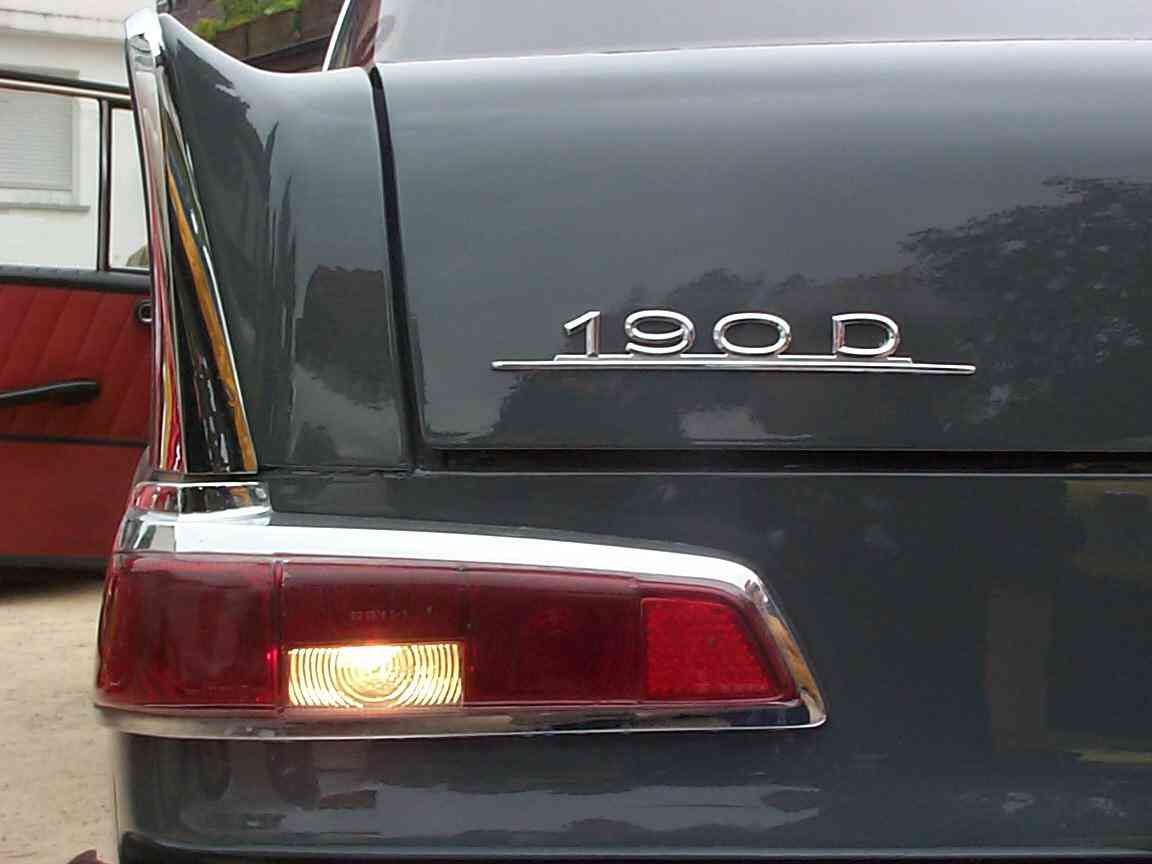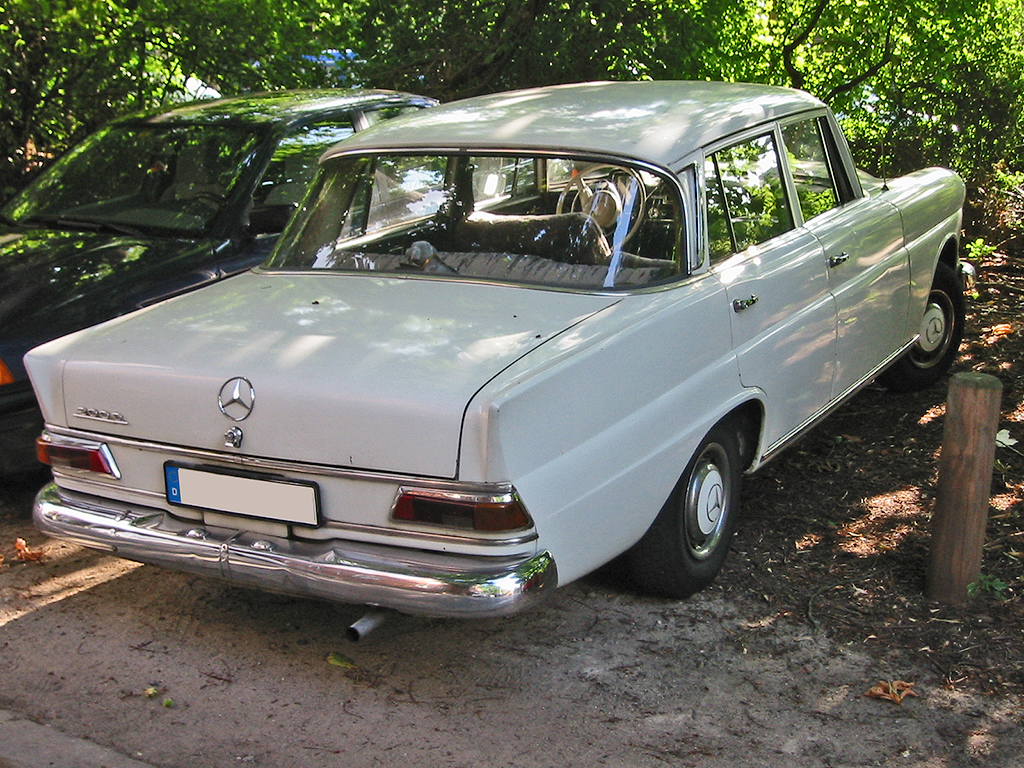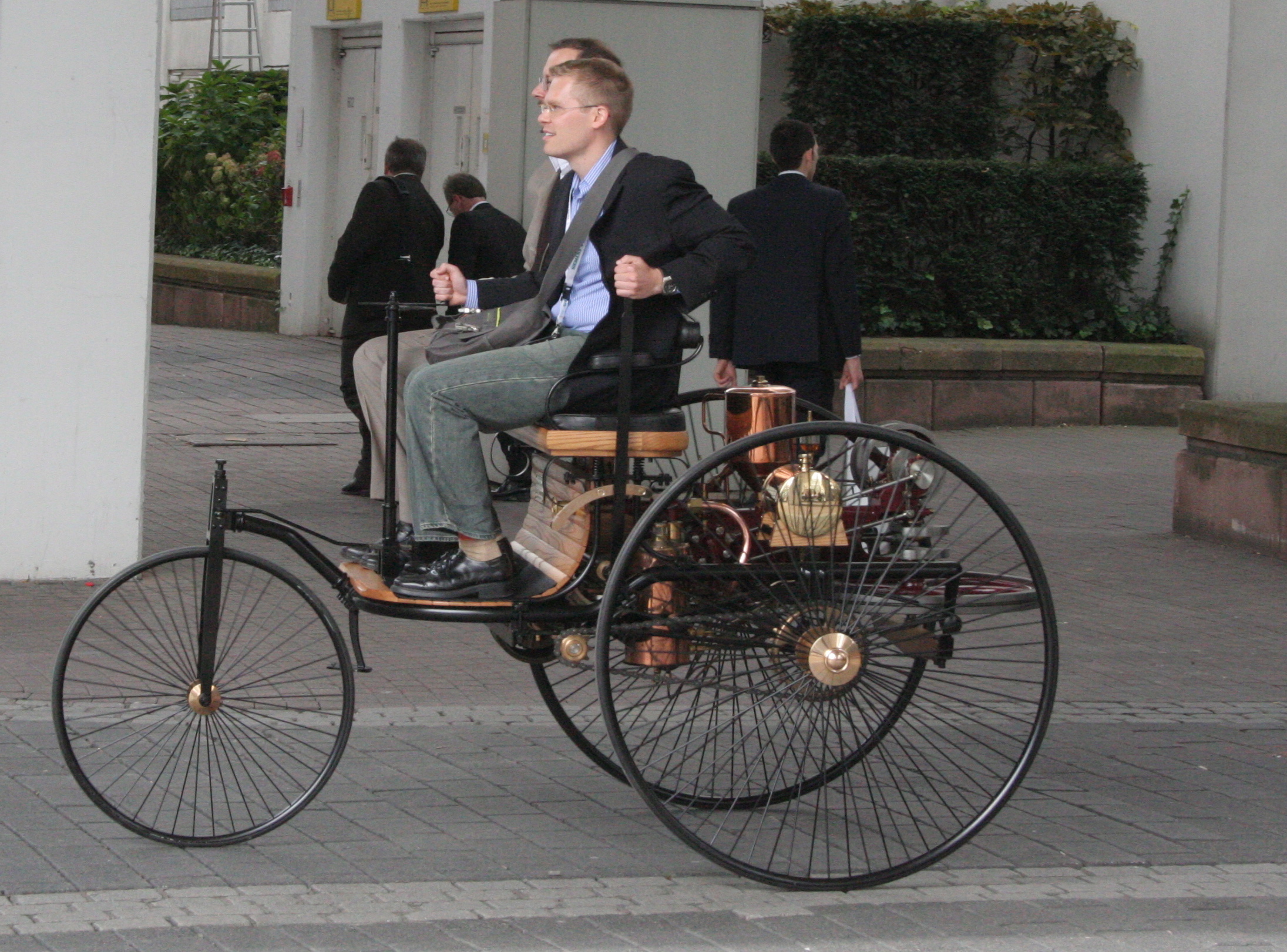The following is a List of BMW vehicles indexed by year of introduction.
Cars
1920s
3/15 saloon 1927-1931
1930s
3/15 DA-3 Wartburg roadster 1930-1931 (based on the 3/15, BMW's first roadster)
3/20 PS 1932-1934
303 saloon 1933-1934 (first use of the "kidney" grille and straight-6 engine)
309 saloon 1934-1936 (a four-cylinder version of the 303)
315 saloon 1934-1937
315/1 roadster 1934-1937 (roadster based on the 315)
319 saloon 1935-1937 (larger-engined version of the 315)
319/1 roadster 1935-1937 (larger-engined version of the 315/1)
329 convertible 1937 (convertible based on the 319)
326 saloon and cabriolet 1936-1941
327 coupé and cabriolet 1937-1941
320 saloon and cabriolet 1937-1938 (based on the 326 with 329 suspension)
321 saloon and cabriolet 1938-1941
BMW 335 sedan 1939 –1941
328 Roadster 1936-1940
1940s
326 sedan and cabriolet 1945-1946 (limited production following World War 2)
321 saloon and cabriolet 1945-1950 (resumed production after World War 2)
327 coupé and cabriolet 1945-1955 (resumed production after World War 2)
340 sedan 1949-1953 (later cars badged as EMW 340)
1950s
501 saloon 1952–1958
BMW 502 1954–1964 (V8-engined version of 501)
Isetta 250 micro car 1955–1956
Isetta 300 micro car 1956–1962
600 micro car 1957–1959 (4 set car based on Isetta 300)
503 coupe and cabriolet 1956–1959
roadster 1956–1959
700 saloon and coupe 1959–1965
1960s
3200 CS coupe 1962–1965 (based on the 503)
1500 saloon 1962–1966 (first of the "New Class" saloons)
1800 saloon 1963–1971
1600 saloon 1964–1968
1602 saloon 1966–1975 (2 door version of 1600)
2000C/CS coupe 1965–1969
E9 coupe 1968–1975
2000 saloon 1966–1972
BMW 2002 saloon 1968–1976 (2 door version of 2000)
E3 saloon 1968–1977
1970s
E12 mid-sized sedan 1972–1981 (first of the "5 series" mid-size sedans)
E24 mid-sized coupe 1976–1989
E21 compact sedan and convertible 1975–1983 (first of the "3 series" compact sedans)
1502 saloon 1975–1977 (1.5L engine version of 2002)
BMW 1802 1975–1977 (1.8L engine version of 2002)
E23 large sedan 1977–1986 (first of the "7 series" large sedans)
BMW M1 supercar 1978–1981 (chassis code E26)
1980s
E28 5 series compact mid-sized sedan 1981–1988
E30 3 series sedan, convertible and estate 1982–1994
Z1 roadster 1989-1991
E32 7 series large sedan 1986–1994
E34 5 series mid-sized sedan 1988–1996
E31 8 series 2+2 coupe 1989–1999
1990s
E36 3 series sedan, coupe, convertible and touring 1990–2000
E36 Compact hatchback 1993–2000 (first generation Compact)
Z3 coupe and roadster 1996–2002
M coupe 1998-2002 (first generation M Coupe)
E39 5 series mid-sized sedan 1995–2003
E53 X5 mid-sized SUV 1999-2006 (BMW's first SUV)
E38 7 series large sedan 1995–2001
E46 3 series sedan, coupe, convertible and touring 1998–2006
E52 Z8 roadster 1999-2003
2000s
E46 Compact hatchback 2000-2004 (second generation Compact)
E65/66/67/68 large sedan 2002–2008
E85/E86 Z4 roadster/coupe 2002–2008 (first generation Z4)
E83 X3 crossover SUV 2003-2010
E60 5 series mid-sized sedan 2003–2010
E63/E64 mid-sized coupe/convertible 2003-2011
E61 estate 2004-2011
E70 X5 mid-sized SUV 2006-present (second generation X5)
E71 X6 mid-sized crossover 2008-present (2 door version of X5)
E81/E87 1 series hatchback 2004-2011 (first generation 1 Series)
E82/E88 1 series small coupe/convertible 2007-2011
X1 compact crossover SUV 2009-present
X3 crossover 2004–present
E90/E91/E92/E93 3 series sedan/touring/coupe/convertible 2005-2011
F01/F02/F03/F04 7 series large sedan 2008-
E89 roadster 2009–present (second generation Z4)
F10 5 series mid-sized sedan 2009–present
F11 5 series mid-sized estate 2009-present
F07 5 series GT 4 door coupe 2009-present
2010s
F12/F13 mid sized coupe/convertible 2011-present
F25 X3 crossover SUV 2011–present
F20 1 series hatchback 2011–present
F30 3 series compact sedan 2012–present
Prototypes
BMW CS Concept
1972 Turbo[1]
1990 M8: A high-performance version of the 8 Series coupe designed to compete with the likes of Ferrari.
1991 E1 Electric car.[2]
1993 Z13[3]
1995 Just 4/2 A two-seater open sports car with a BMW K series motorbike engine positioned behind the driver and passenger.[4][5]
1995 Z18[4]
1999 Z9 Designed by Adrian van Hooydonk that marked a departure from BMW's traditional conservative style, causing some controversy among BMW enthusiasts.[citation needed] This later on became the 6-series.
750hL At Expo 2000. A 7 Series sedan powered by a hydrogen fuel cell engine. As of March 2007, there are as many as 100 750hL vehicles worldwide for testing and publicity purposes.[citation needed]
2000 Z7[6]
2001 X-Coupe
2007 CS Concept
2008 Concept 1 series tii: A high-performance tuned version of the 1 Series. "tii" references the 2002tii model.
2008 GINA Based on the structure of a Z8 with a light fabric skin and hydro-electric technology to allow the shape to change.[7]
2008 Concept X1: BMW's first compact Sports Activity Vehicle.
2008 Concept 5 Series Gran Turismo First of the BMW Progressive Activity Series.
2009 Vision Efficient Dynamics Presented at the Frankfurt Motor Show.
2009 C1-E An electric version of the C1 scooter.
2010 Gran Coupe First sketches of the new 6 series with 4 doors.
M models
Main article: BMW M#Lineup
Production series codes
BMW 501 - (1952–1958) Sechszylinder Limousine
BMW 502 - (1954–1964) Achtzylinder Limousine
BMW 503 - (1956–1959) Achtzylinder Coupé und Cabrio 1956-59
BMW 507 - (1955–1959) Achtzylinder Roadster
BMW 3200 CS- (1956–1959) Achtzylinder Coupé und 1 Cabrio 1961-65
BMW Typ100 - (1955–1962) BMW Isetta
BMW Typ106 - (1957–1959) BMW 600
BMW Typ107 - (1959–1965) BMW 700
BMW Typ110 - (1961–1964) BMW 700 Cabriolet
BMW Typ114 - (1966–1976) BMW 1600-2, 1602-2002TI, 1502
BMW Typ115 - (1963–1964) BMW 1500
BMW Typ116 - (1964–1966) BMW 1600
BMW Typ118 - (1963–1971) BMW 1800-1800TI/SA
BMW Typ120 - (1966–1970) New Class Coupé 2000C/CS
BMW Typ121 - (1966–1972) BMW 2000-2000tii
BMW E3 — (1968–1977) 2.5, 2.8, 3.0, 3.3 "New Six" sedans
BMW E9 — (1969–1975) 2800CS, 3.0CS, 3.0CSL "New Six" Coupés
BMW E12 — (1974–1981) 5 Series
BMW E21 — (1976–1983) 3 Series
BMW E23 — (1977–1986) 7 Series
BMW E24 — (1976–1989) 6 Series
BMW E26 — (1978–1981) M1
BMW E28 — (1981–1987) 5 Series
BMW E30 — (1984–1991) 3 Series (1982-1983 E30 sold in Europe)
BMW E31 — (1989–1997) 8 Series
BMW E32 — (1986–1994) 7 Series
BMW E34 — (1988–1995) 5 Series
BMW E36 — (1992–1999) 3 Series
BMW E36/5 — (1995–1998) 3 Series Compact (US market known as "318ti")
BMW E36/7 — (1996–2002) Z3 Series Roadster
BMW E36/8 — (1998–2002) Z3 Series Coupé
BMW E38 — (1994–2001) 7 Series
BMW E38/2 — (1994–2001) 7 Series long wheelbase
BMW E38/3 — (1998–2001) 7 Series Protection
BMW E39 — (1995–2003) 5 Series
BMW E46/5 — (2000–2004) 3 Series Compact
BMW E46/4 — (1998–2005) 3 Series Sedan
BMW E46/3 — (1999–2005) 3 Series Touring/Sports Wagon
BMW E46/2 — (1999–2006) 3 Series Coupé
BMW E46/C — (1999–2006) 3 Series Convertible
BMW E52 — (2000–2003) Z8
BMW E53 — (2000–2006) X5
BMW E60 — (2004–present) 5 Series
BMW E61 — (2004–2007) 5 Series Touring/Sports Wagon
BMW E62 — (2004–2007) 5 Series Protection
BMW E63 — (2004–present) 6 Series Coupé
BMW E64 — (2004–present) 6 Series convertible
BMW E65 — (2001–2007) 7 Series short wheelbase
BMW E66 — (2001–2007) 7 Series long wheelbase
BMW E67 — (2001–2007) 7 Series Protection
BMW E68 — (2005–2007) Hydrogen 7
BMW E70 — (2007–present) X5
BMW E71 — (2008) X6
BMW E72 — (2009) X6 Hybrid
BMW E81 — (2007–present) 1 Series (3-door)
BMW E82 — (2007–present) 1 Series Coupé
BMW E83 — (2004–present) X3
BMW E84 — (2009–present) X1
BMW E85 — (2003–present) Z4
BMW E86 — (2006–present) Z4 Coupé
BMW E87 — (2004–present) 1 Series (5-door)
BMW E88 — (2008) 1 Series Convertible
BMW E89 — (2009) Z4
BMW E90 — (2005–present) 3 Series
BMW E91 — (2005–present) 3 Series Touring/Sports Wagon
BMW E92 — (2006–present) 3 Series Coupé
BMW E93 — (2007–present) 3 Series Convertible
BMW F01 — (2008) 7 Series
BMW F02 — (2009) 7 Series long wheelbase
BMW F03 — (2008) 7 Series Protection
BMW F04 — (2011) 7 Series ActiveHybrid
BMW F07 — (2009) 5 GranTurismo
BMW F10 — (2010) 5 Series
BMW F11 — (2011) 5 Series Touring/Sports Wagon
BMW F12 - (2011) 6 Series
BMW F13 - (2011) 6 Series Convertible
BMW F20 - (2011) 1 Series
BMW F25 - (2012) X3
BMW F30 - (2012) 3 Series
Model nomenclature
Since 1972, BMW model names have generally been a 3 digit number is followed by 1 or 2 letters
the first digit represents the chassis type (e.g. 3 series, 5 series)
the last two digits represent the engine displacement in litres times 10.[8]
the letters provide additional information on the model variant (see below).
Commonly used letters at the end of the model name are:
C = coupé, last used on the BMW E46 and the BMW E63 (dropped after 2005 model year)
c = cabriolet
d = diesel
e = eta, an engine tuned for fuel efficiency rather than power (from the Greek letter 'η')
h = hydrogen
i = injected (fuel injection)
L = long wheelbase
s = sport, this can represent either upgraded interior/cosmetic options or increased engine power depending on the model. For the E36 range, all models with "s" in the name were coupes/convertibles)
sDrive = rear wheel drive
T = touring (wagon/estate)
ti = hatchback for the BMW 3 Series hatchback
td = "Turbo Diesel" ( 524td, 525td/s, 324td, 325td/s, 318tds), or hatchback diesel ( E46 Compact 318td, 320td; E36 Compact 318tds)
x / xDrive = BMW xDrive all wheel drive














